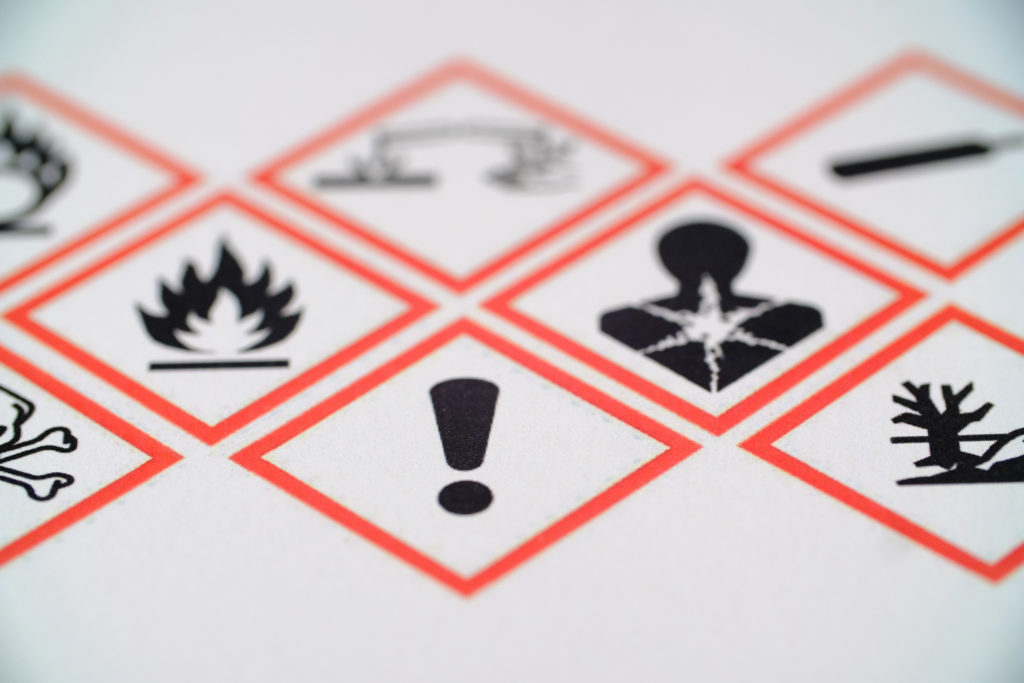In the United States, bulk storage containers used to store oil and petroleum products are federally regulated under the authority of the Clean Water Act. However, the exact regulations fall under a network of overlapping federal, state and local jurisdictions. At the production and storage sites, operators store many types of fluids. Hydrocarbons extracted from reservoirs move through a complex system of separators and storage facilities before being sold on the market. Water for hydraulic fracturing must be stored on site as drilling progresses, and then flowback water must be stored during production. Also, operators may store a variety of fuels for operations, such as diesel fuel.
Storage tanks must be labeled with specified elements including pictograms, signal words and hazard and precautionary statements. Labels, as defined in the Hazard Communication Standard (HCS), are an appropriate group of written, printed, or graphic informational elements concerning a hazardous chemical that are affixed to, printed on, or attached to the immediate container of a hazardous chemical, or to the outside packaging. The label provides information to the workers on the specific hazardous chemical. They must also provide instructions on how to handle the chemical so that users are informed about how to protect themselves. While labels provide important information for anyone who handles, uses, stores, and transports hazardous chemicals, they are limited by design in the amount of information they can provide.
Labels must be maintained on chemicals in a manner which continues to be legible and the pertinent information (such as the hazards and directions for use) does not get defaced or removed in any way.
Improperly labeled or unlabeled tanks can be a serious issue on a production site. At one end of the spectrum, an improperly labeled tank may be filled with the wrong fluid, and at the other end, a first-response team may be completely unaware of how to handle an emergency situation involving an unlabeled tank. Labeling best practices include identifying the tank’s contents, volume, maximum fill height and any hazards and warnings.


The U.S. Department of Transportation (DOT) and the National Fire Protection Association (NFPA) each maintain a standard list of placards and the minimum sizes for clear display. DOT labels and signs are appropriate especially for any tank vehicles moving onto or off of sites. Color, pictogram and large text labels indicate the hazard of the material. Special codes identify specific materials for emergency responders. For example, the code 1267 on a red flammable field represents crude oil. An operator using NFPA labeling must, through training, ensure that its employees are fully aware of the hazards of the chemicals used. If an employer transfers hazardous chemical from a labeled container to a portable container that is only intended for immediate use by the employee who performs the transfer, no labels are required for the portable container.


The NFPA labels apply for stationary fuel tanks and identify the hazard of the material and the degree of severity. The hazards are arranged as the four blocks of color around the square sign. Blue represents health. Red represents flammability. Yellow represents radioactivity. The white field is reserved for special codes. For example, the code blue 2, red 3, yellow 0, and empty white would be placed on a tank containing crude oil.

Tanks containing chemical materials, such as additives, require more detailed labeling. According to HCS1https://www.osha.gov/sites/default/files/publications/OSHA3636.pdf, the labels must include:
The above pictograms do not replace the diamond-shaped labels that the DOT requires for the transport of chemicals tanks or other containers.

Citations
Hazard Communication Standard: Labels and Pictograms
Images: “Crude Oil Tank” by huyangshu via Shutterstock; “Graphics” by Top Energy Training, adapted from models disseminated by the DOT and NFPA


